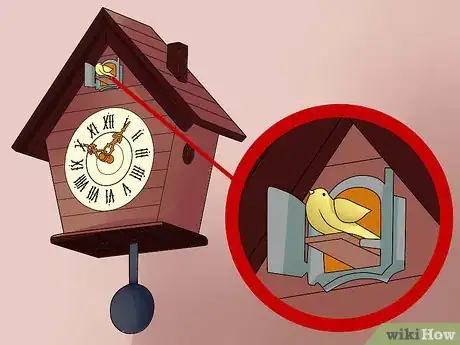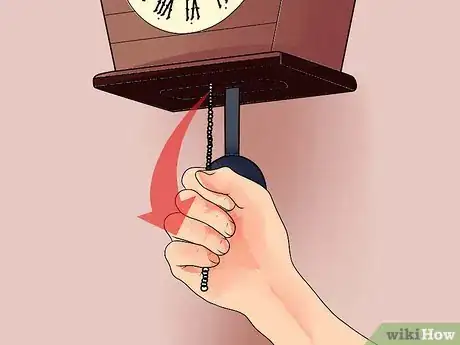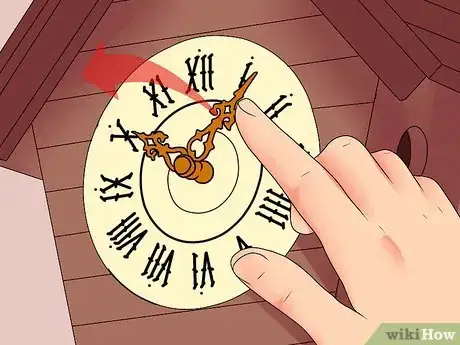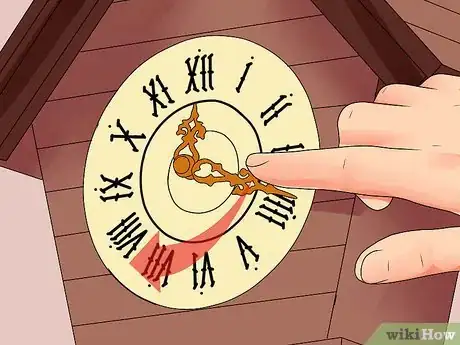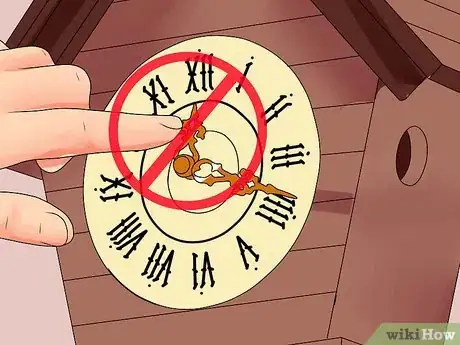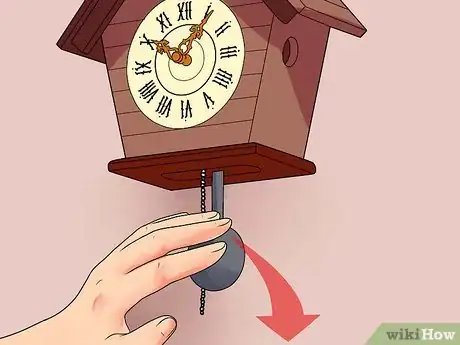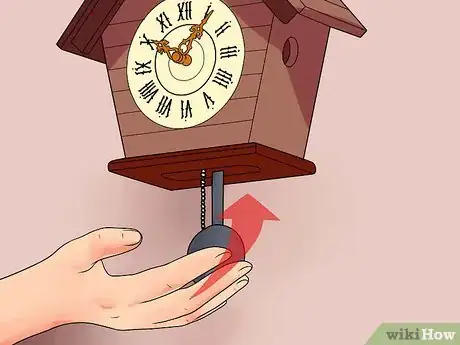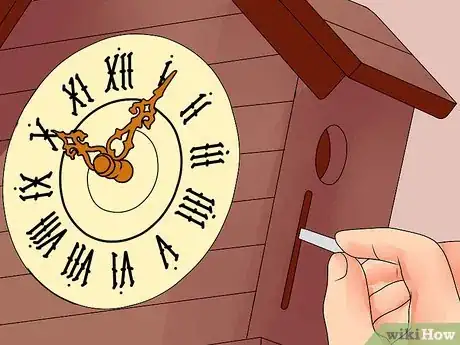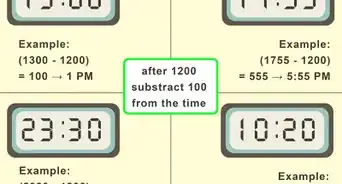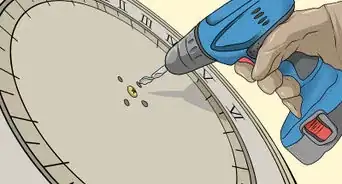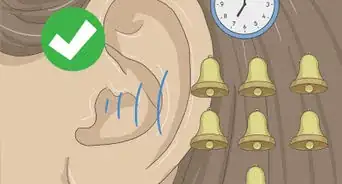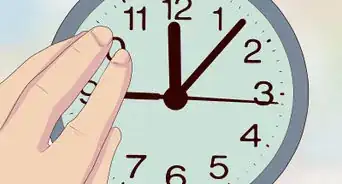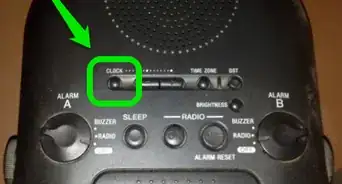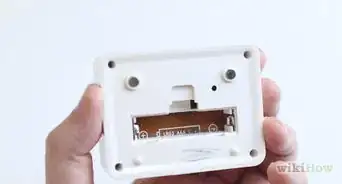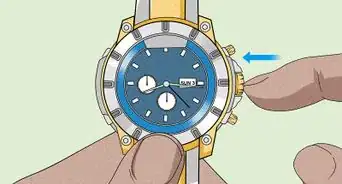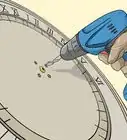This article was co-authored by wikiHow staff writer, Eric McClure. Eric McClure is an editing fellow at wikiHow where he has been editing, researching, and creating content since 2019. A former educator and poet, his work has appeared in Carcinogenic Poetry, Shot Glass Journal, Prairie Margins, and The Rusty Nail. His digital chapbook, The Internet, was also published in TL;DR Magazine. He was the winner of the Paul Carroll award for outstanding achievement in creative writing in 2014, and he was a featured reader at the Poetry Foundation’s Open Door Reading Series in 2015. Eric holds a BA in English from the University of Illinois at Chicago, and an MEd in secondary education from DePaul University.
wikiHow marks an article as reader-approved once it receives enough positive feedback. In this case, several readers have written to tell us that this article was helpful to them, earning it our reader-approved status.
This article has been viewed 181,902 times.
Learn more...
Setting a cuckoo clock is a fairly simple process, but you must handle the clock gently and in the correct manner to avoid breaking it. Hang and start the clock before setting the time, then make any necessary adjustments to the speed of the clock if the time it keeps seems too fast or too slow.
Steps
Preparing the Clock
-
1Keep the clock in a vertical position. Before setting the clock, you should hang it on the wall where you intend to keep it. The clock must be in an upright position before you can set it.[1]
- The clock should be 6 to 6.5 feet (1.8 to 2 m) above the floor.
- Use wide wood screw (like a #8 or #10) that is long enough the fasten into a stud in the wall. You must choose a spot in the wall with a stud; do not attempt to hang the clock where no stud rests.
- Place the screw in the wall at an upward 45 degree angle. It should stick out by about 1.25 to 1.5 inches (3.2 to 3.8 cm).
- Hang the clock on this screw. The clock must be flush against the wall.
- If the chains are still in their packaging, slowly remove the packaging and loosen any knots. Pull out the security wire between them. Do not handle the chains in this manner while the clock is horizontal or upside down since doing so can cause the chains to come loose.
- One weight should be placed on each chain hook.
- Make sure that the pendulum rests on the hanger at the bottom of the clock, near the back.
-
2Unlatch the cuckoo door. If the cuckoo bird's door is kept closed with a wire latch, you need to move the latch aside.[2]
- Failing to unlatch the door can prevent it from opening when it should. This can cause damage to your clock.
- If the cuckoo does not call at the appropriate time even with the door unlatched, check the wire latch again to make sure that it did not slip back into a locked position. You should also make sure that the shut-off switch is not flipped into a silent position (when applicable) and that all clips, rubber bands, and Styrofoam packing materials have been removed from inside the clock.
Advertisement -
3Wind the clock. Grab the chain that does not have a weight on it and gently pull it directly down toward the floor.[3]
- Do not lift or otherwise touch the weighted chain as you wind the clock. There must always be some pressure on the weighted chain in order to keep it in place within the clock.
- The unweighted chain may have a ring on it.
-
4Nudge the pendulum. Gently nudge the pendulum to either side using your hands. It should continue swinging on its own after you start it.[4]
- The pendulum should not rub against the clock cabinet and should swing freely. If this is not the case, then the clock probably isn't completely vertical. Readjust and try again.
- You should also listen to the ticking. If the clock does not tick evenly on both sides, you should readjust the straightness of the clock until the ticking sounds even.
Setting the Time
-
1Turn the minute hand counterclockwise. Turn the long hand of the clock to the left until you reach the correct time.
- When done in this manner, the cuckoo call should set itself automatically. There is no need to pause and check the sound.
-
2Alternatively, turn the minute hand clockwise and pause. If you turn the long hand to the right, you must pause at every hour ("12") and half hour ("6") mark before continuing to turn it.[5]
- Wait for the cuckoo call to finish playing before you turn the minute hand any further past these marks.
- If you have a musical clock, wait for the melody to finish playing before you continue to turn the minute hand.
- When setting a cuckoo clock that has both cuckoo birds and quails, you will also need to stop at the quarter past ("3") and quarter until ("9") marks. Wait for the call or music to stop before continuing.
-
3Never move the hour hand. Do not turn the shorthand at all when setting the clock.[6]
- Turning the hour hand instead of the minute hand will damage the clock.
Regulating the Time
-
1Observe the clock for 24 hours. Even if you purchased a new, pre-regulated cuckoo clock, you should observe it for a full 24 hours to determine if it is on time.
- After setting the original time, compare the time on the cuckoo clock to the time shown on another trusted clock, watch, or time-keeping device.
- Make sure to use a time-keeping device that can be trusted. Stick with a watch or similar device that has always been reliable in the past.
-
2Move the pendulum down to slow the clock. If the clock runs too fast, slow it down by carefully moving the pendulum bob downward. This causes the pendulum to move slower.
- The bob will usually look like a weighted disc or leaf.
- Monitor the clock for the rest of the day to make sure that this adjustment was correct.
-
3Move the pendulum up to speed up the clock. If the clock runs too slow, speed it up by carefully pushing the pendulum bob up. This causes the pendulum to swing faster.
- The pendulum bob will usually be in the shape of a leaf or weighted disc.
- Continue checking the clock's accuracy to determine if this adjustment was correct.
-
4Wind as needed. The frequency with which you need to wind the clock will vary depending on the model, but you'll usually need to wind it once every 24 hours or once every eight days.
- Each time you wind the clock, do so in the same manner used to wind the clock initially. Pull the unweighted chain down to raise the weighted chain up as high as it will go without resistance.
-
5Adjust the cuckoo shut-off switch as needed. The cuckoo noise of some clocks can be switched of manually as desired. Make sure that the switch is adjusted to either play or mute the sound as desired.
- The switch can be found on either the bottom of the clock or to the left side.
- Usually, you will need to flip the switch off to turn off the cuckoo call and flip it down to turn the call back on again. This can vary by model, though, so you may need to check with the manufacturer to verify the correct way to use the manual shut-off switch.
- Never adjust this switch while the cuckoo call or song is actively playing.
- Note that this feature is not available on every model. It can be especially rare for vintage or antique cuckoo clocks.
Community Q&A
-
QuestionDo cuckoo clocks need to be oiled?
 wikiHow Staff EditorThis answer was written by one of our trained team of researchers who validated it for accuracy and comprehensiveness.
wikiHow Staff EditorThis answer was written by one of our trained team of researchers who validated it for accuracy and comprehensiveness.
Staff Answer wikiHow Staff EditorStaff AnswerIt’s best to avoid oil-based lubricants inside a cuckoo clock, since they can eventually gum up the gears. However, if the gears are sticking, a dry graphite lubricant can be helpful. You can use an oil-based cleanser to clean the wood casing of the clock and give it a nice sheen.
wikiHow Staff EditorStaff AnswerIt’s best to avoid oil-based lubricants inside a cuckoo clock, since they can eventually gum up the gears. However, if the gears are sticking, a dry graphite lubricant can be helpful. You can use an oil-based cleanser to clean the wood casing of the clock and give it a nice sheen. -
QuestionWhat’s the best place to hang a cuckoo clock?
 wikiHow Staff EditorThis answer was written by one of our trained team of researchers who validated it for accuracy and comprehensiveness.
wikiHow Staff EditorThis answer was written by one of our trained team of researchers who validated it for accuracy and comprehensiveness.
Staff Answer wikiHow Staff EditorStaff AnswerHang the clock in a prominent spot where it can be a focal point on your wall. For example, you might display it in your family room or living room. Hang it 6.5-7 feet (about 2 meters) up on the wall for best viewing and to allow you to wind the clock easily. To avoid damaging your clock, make sure not to hang it in an area where it will be exposed to high humidity or lots of direct sunlight throughout the day.
wikiHow Staff EditorStaff AnswerHang the clock in a prominent spot where it can be a focal point on your wall. For example, you might display it in your family room or living room. Hang it 6.5-7 feet (about 2 meters) up on the wall for best viewing and to allow you to wind the clock easily. To avoid damaging your clock, make sure not to hang it in an area where it will be exposed to high humidity or lots of direct sunlight throughout the day. -
QuestionHow do you hang the weights on a cuckoo clock?
 wikiHow Staff EditorThis answer was written by one of our trained team of researchers who validated it for accuracy and comprehensiveness.
wikiHow Staff EditorThis answer was written by one of our trained team of researchers who validated it for accuracy and comprehensiveness.
Staff Answer wikiHow Staff EditorStaff AnswerMount the clock on the wall first and allow the chains to hang down. Then, look at the chains and locate the weight hooks. Find the opposite end of each chain and pull it down so that the weight hook hangs approximately 3 inches (7.6 cm) from the bottom of the clock. Finally, carefully attach the weights to the hooks. If your cuckoo clock has three weights, the heaviest one goes farthest to the right (the other two should be the same weight).
wikiHow Staff EditorStaff AnswerMount the clock on the wall first and allow the chains to hang down. Then, look at the chains and locate the weight hooks. Find the opposite end of each chain and pull it down so that the weight hook hangs approximately 3 inches (7.6 cm) from the bottom of the clock. Finally, carefully attach the weights to the hooks. If your cuckoo clock has three weights, the heaviest one goes farthest to the right (the other two should be the same weight).
Warnings
- Always use a gentle touch when setting and handling a cuckoo clock. The inner workings of the clock are delicate and precise, so applying too much force can cause the clock to break.⧼thumbs_response⧽
Things You'll Need
- Cuckoo clock
- Long #8 or #10 wood screw
- Drill or screwdriver
- Stud finder
- Secondary clock, watch, or similar time-keeping device
References
- ↑ http://billsclockworks.com/opinstructions/cuckoo.htm
- ↑ https://billsclockworks.com/opinstructions/cuckoo.htm
- ↑ https://www.youtube.com/watch?v=t0tNfGPpbSw
- ↑ https://www.youtube.com/watch?v=RdOOOfsYckA
- ↑ https://billsclockworks.com/opinstructions/cuckoo.htm
- ↑ https://www.youtube.com/watch?v=t0tNfGPpbSw
About This Article
To set a cuckoo clock, you’ll need to hang the clock on a wall, start it, then turn the minute hand to the right time. Start with the clock hanging vertically on the wall. Then, wind the clock by gently pulling the chain without a weight on it towards the floor. Gently nudge the pendulum to one side to the clock starts ticking. Finally, turn the minute hand to the left until you reach the correct time. Never turn the hour hand, since this can damage your clock. For more tips, including how to speed up or slow down a cuckoo clock, read on!

